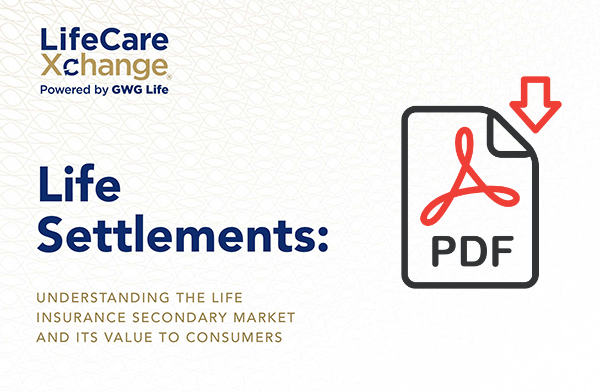NOTE: The following is an excerpt taken from the most recent whitepaper released by author and former industry lobbyist, Chris Orestis, Executive Vice President for GWG.
The whitepaper is titled “Life Settlements: Understanding the Life Insurance Secondary Marketing and its Value to Consumers“. To download your own free copy of the whitepaper in its entirety, click here.
Life Settlements: A Brief History
For over 100 years, the owner of any type of life insurance policy has had the legal right to sell or exchange their policy to a third party as an alternative to lapsing, surrendering or taking loans.
A key moment in the development of the life insurance industry was the Supreme Court ruling in 1911 by Justice Oliver Wendell Holmes. The case Grigsby v. Russell, established that a life insurance policy is an asset of the policy owner. Holmes noted in his opinion that life insurance possessed all the ordinary characteristics of property, and therefore represented an asset that a policy owner could sell without limitation.
The life settlement market took off in the 2000s as more investors saw the viability of this asset class, and consumer awareness grew as marketing and advisor participation increased.
Definitions and Examples
A life settlement is the sale or exchange of a life insurance policy by the policy holder while still alive for a percentage of the in-force death benefit in the form of valuable consideration (cash or other financial instrument), but in excess of the cash “surrender” value.
- Life Settlement Brokers Life Settlement Brokers are specifically licensed by state insurance departments to act as an intermediary between the buyer and seller of a policy.
- Life Settlement Providers Life Settlement Providers are specifically licensed by state insurance departments to negotiate and transact a life settlement on behalf of a Finance Entity or any buyer of a life insurance policy.
- Finance Entities Finance Entities are investment groups and hedge funds that finance the purchase of life insurance policies in the secondary market.
The Regulatory Landscape
Forty-five states covering 90 percent of the U.S. population have life settlement regulations in place governing areas such as producer licensing to “broker” a life settlement, brokerage compensation disclosure and other consumer protections.
A watershed event for the life insurance industry, and people in need of long-term care occurred on July 19, 2017 when the National Association of Insurance Commissioners released the policy paper Private Market Options for Financing Long-Term Care endorsing the life insurance secondary market as a viable option to help people pay for long-term care.
Seven Key Consumer Protections
As a result of these seven consumer protections, there have been no consumer complaints or litigation against licensed life settlement companies since 2012. In fact, the only complaints reported involving life settlements over this same period have been against life insurance companies that may have attempted to thwart the client’s sale of their policy.
Fiduciary Risks
Advisors should be aware of areas of exposure to legal and financial liabilities stemming from disclosure issues about the legal rights for life insurance policy owners and their ability to access the secondary market for life settlements. Because a life insurance policy is legally recognized as personal property of the owner, withholding information about secondary market options from a policy owner opens up the risk of possible legal liability for any advisor.
Tax Advantages for Life Settlements
There are a variety of tax advantages from life settlements that can help a policy owner address a deficit in retirement income, provide an exit strategy out of a policy that is no longer needed or affordable, or provide a way to address the expensive costs of healthcare, senior living, and long-term care.
Conclusion
The combination of growing consumer awareness, advisor adoption, a favorable tax and regulatory environment, and the financial challenges confronting an aging Baby Boom population will continue to propel growth in this market, and help seniors tap into billions of dollars of available liquidity coming out of an asset they already own.

NOTE: The above is an excerpt taken from the most recent whitepaper released by author and former industry lobbyist, Chris Orestis, Executive Vice President for GWG.
The whitepaper is titled “Life Settlements: Understanding the Life Insurance Secondary Marketing and its Value to Consumers“. To download your own free copy of the whitepaper in its entirety, click here.

Chris Orestis is the Executive Vice President of GWG Life, one of the largest secondary market buyers of life insurance policies in the market and a publicly traded company on NASDAQ. Chris is an author, speaker and nationally known industry expert.
He has been in the insurance industry for over 20 years, first in Washington DC as a lobbyist for the life and health industry and then as the founder and CEO of Life Care Funding, where he pioneered the use of life settlements as a tool to pay for long-term care before merging his company with GWG.













